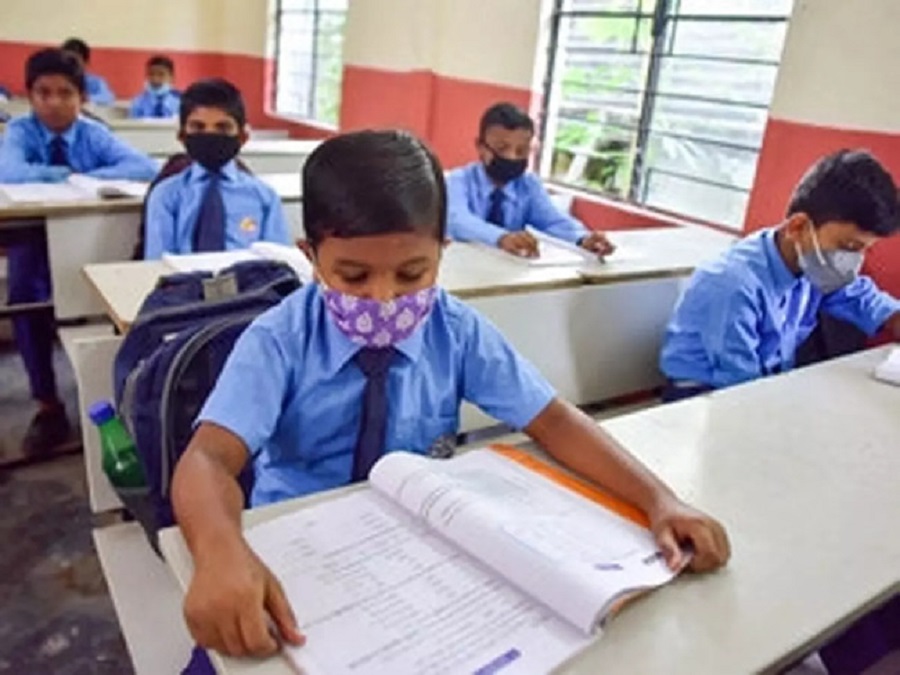
From Wall Street, the view of technology-assisted learning in India looks very different. As China cracks down on private education, India is witnessing a surge of interest, with an estimated $4 billion flowing into the industry over the last 18 months.
Economic lockdowns hurt output, but once they’re lifted, activity usually bounces back, and jobs return. School lockouts, by comparison, may have a longer and more pernicious effect.
A new survey of nearly 1,400 underprivileged school children across 15 Indian states raises some disturbing possibilities. A year-and-a-half of pandemic-related school closures, for instance, have created a four-year learning deficit. A student who was in Grade 3 before Covid-19 is now in Grade 5, and will soon enter middle school, but with reading abilities of a Grade 1 pupil.
Trying to narrow this gap would put enormous demands on a reluctant welfare state, while leaving it unaddressed would lop off from India's “demographic dividend ” — the high growth the country can potentially achieve while it still enjoys a relatively youthful population.
The School Children's Online and Offline Learning, or SCHOOL, survey, overseen by a group of economists including Jean Dreze and Reetika Khera, shines a spotlight on the biggest losers of lockouts: the poor. At the family level, there is reasonably high access to smartphones: 77% in urban areas, and 51% in villages, just what one would expect in a country witnessing a digital revolution of sorts amid crashing handset and data prices. Yet, even among households that possess internet-enabled device, the proportion of children who’re regularly studying online dwindles to 31% in cities and 15% in villages. The wage-earner’s claim on the phone clearly outweighs its utility as an educational device.
“The school has been closed ever since the pandemic began.” That was the sentence, in large typeface, that volunteer surveyors asked children to read in their local language. About 35% of Grade 3-5 students in cities and 42% of the cohort in villages couldn’t manage more than a few letters.
From Wall Street, the view of technology-assisted learning in India looks very different. As China cracks down on private education, India is witnessing a surge of interest, with an estimated $4 billion flowing into the industry over the last 18 months. Byju’s, a startup valued at $16.5 billion, is in early discussions about an initial public offer. Smaller rivals like Eruditus and UpGrad raised money from investors last month.
But the thriving edtech market caters mostly to the needs of the wealthier segments of the population. Those who make a precarious living from non-salaried occupations — and rank far from the top in Indian society’s caste hierarchy — can do little to change findings that show that, away from generally better-equipped urban schools, only 12% of children who have some access to online education participate in live lessons.
As for those who’re consigned to the offline world, the biggest learning is from teacher-assigned homework, which even in cities covers just 39% of students. Homework without regular feedback has questionable pedagogic value, but that’s another matter. Delivery of education was lopsided even before the pandemic, but has become more so because of a yawning digital divide.
Some Indian states are beginning to acknowledge that physical classes for primary and middle-school students have to resume without further delay. Otherwise, learning gaps may become impossible to reverse, causing higher dropout rates and concomitant social problems, including youth violence. Future productivity may suffer, and income inequality could worsen as a generation is robbed of a shot at upward mobility. Society must place at least some weight on the future of today's disadvantaged children even as it deals with the immediate public health challenge.
The good news is that India’s poor haven’t given up on education. The SCHOOL survey notes that child labor is unusual among very young children, though among girls aged 10 to 14, a “large majority” are now doing some housework and, in villages, 8% of them had done paid work in the preceding three months.
Before more families are tempted to bargain away their future for food, schools must reopen.











